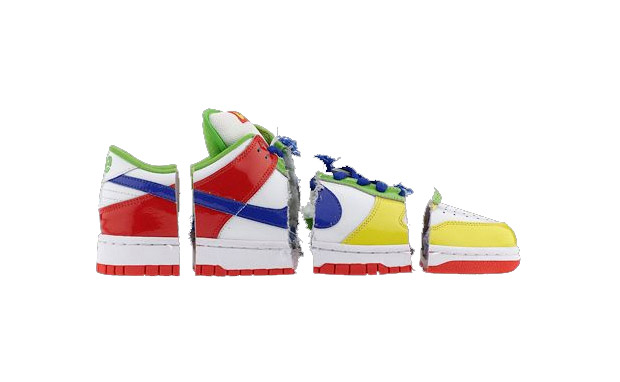This post may contain affiliate links. Please read our disclosure policy.
Quick, what’s the first thing that comes to your mind when I say “eBay sneaker pricing”?
Yeah, me too – or at least that’s what I used to think. But then I started Campless and created the Sneaker Price Guide.
The prices in our Guide are calculated from almost 9 million eBay auctions. And, yet, the most common criticism we hear is that our prices are too low. Someone is positive that Shoe X sells for more than we’ve calculated.
While it’s possible that we’ve made a mistake (and so we double check every sneaker that someone questions), more often than not the problem is not with our price, but with the sneakerheads’ perception of the true value of Shoe X (and no, this is not the code name for a new collab between Nike and Marvel).
We agree that many prices in our Guide are lower than we expected them to be. In fact, when we first started doing this work – way back in the summer of 2012 – we feared there was a problem with our methodology. So I reviewed thousands of auctions by hand until I was convinced that many sneakers do, indeed, sell for much less than the “expected price”.
And then I decided to prove it, mathematically. I analyzed 220k eBay auctions for Jordan Retros 3-14 over a 14 month period, ending May 2013. The goal was to prove that sneakerheads’ perception of eBay pricing is too high. The answer: It is.
The high level findings from that analysis are:
The best deals disappear immediately. 89% of eBay sales are priced at or below average, but these auctions disappear within a few days, leading to “stale digital inventory” which sits for weeks, sometime never selling.
Expensive auctions are seen the most. The consequence of stale digital inventory is that overpriced auctions are seen 5 times more often than underpriced auctions.
The perception gap is at least $46. Quantifying the stale digital inventory phenomenon into dollars, perception is that Jordans are at least $46 more expensive than actual price, not counting the unmeasurable impact of extreme auctions or external sites like Flight Club.
In picture form, it looks like this:
Take another look at the chart. Think about the conclusion again for a minute: Sneakerheads think Jordans sell for $46 more on eBay than they actually do. Wow. This is huge.
For years the easiest target for pent-up, didn’t-cop-the-latest-release sneakerhead rage was eBay. “Bots dusted me at 8am, but I’ll randomly tweet my 146 followers asking for a lob before I pay eBay prices!” It’s as if the only pre-requisites for your sneakerhead cool card are to call anyone under 20 a hypebeast and say you shop on Instagram.
Russ Bengston recently published “10 Things Sneakerheads Should Stop Bitching About”. I’d like to offer the data-supported case for number 11: eBay. He played around the edges by listing “resellers” and “prices”, but in terms of all channels available to buy or sell kicks, none is more denigrated than eBay. It’s not even close. And it’s undeserved on each of the big three metrics: Fees, Fakes and Prices.
Yes, eBay has higher fees than other channels, but it also offers unparalleled volume of buyers and sellers. Plus, fees are the sellers’ cost; every channel has overhead. What’s amazing is that $46 is almost exactly how much the eBay & Paypal fees (14%) would be on a $335 sale (perception price). Many people already think sellers add these fees to the sneaker price, so this lends even more credence to the notion that sneakerhead perception is in line with the auctions they see. (Or it’s an absolutely ridiculous scary coincidence).
Yes, fakes are rampant on eBay, but fakes exist on other channels, as well – places where there’s less buyer protection and limited seller reputation info. Plus, our analysis excludes fakes (as does all of our work), so fakes don’t impact the $46 perception gap.
But prices are actually pretty good – and that’s the big one; that’s the one no one knows. That fact, plus others uncovered by our work, have profound implications for both sides of the sneakerhead transaction:
Buyers: The lesson here is to shop on eBay, but ignore any auction which has been sitting for over 7 days – odds are it’s overpriced and a better deal will come along soon. Thousands upon thousands of reasonably priced sneakers sell on eBay every day, you just need to know where to look.
Sellers: The guidance is clear. If your auction hasn’t sold after a week, it’s probably overpriced and you should consider lowering the price.
You can keep scrolling through Instagram and Twitter, hoping to catch the shoe you want at the exact moment it’s posted, asking for more pics, verifying the size . . . I’ll stick with eBay, where everything is easy and the prices are a lot better than you think they are.
Josh Luber is the founder of Campless, a sneakerhead data company. For a complete explanation of his eBay perception analysis, please visit the Campless post: “eBay prices are a lot better than you think.”




